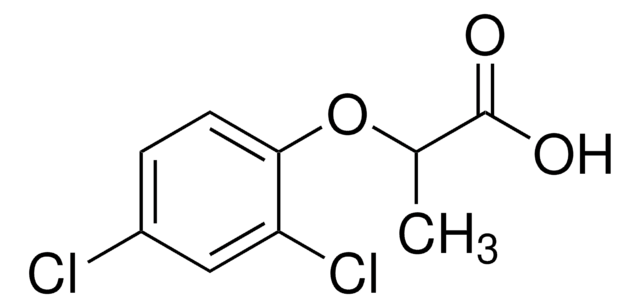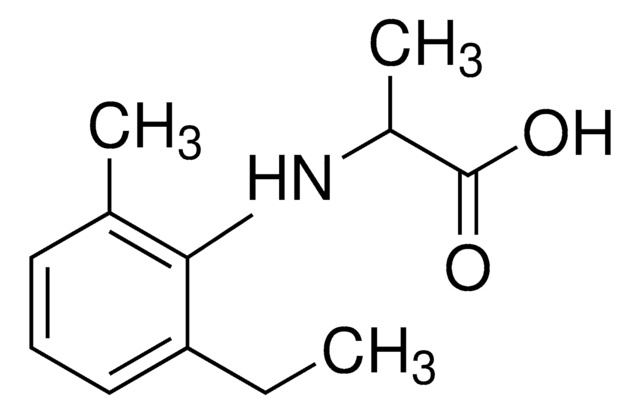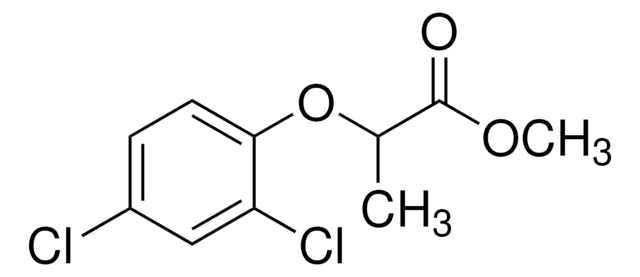45436
Dichlorprop
PESTANAL®, analytical standard
Sinónimos:
2-(2,4-Dichlorophenoxy)propionic acid
About This Item
Productos recomendados
grade
analytical standard
Quality Level
product line
PESTANAL®
quality
racemate
shelf life
limited shelf life, expiry date on the label
technique(s)
HPLC: suitable
gas chromatography (GC): suitable
application(s)
agriculture
environmental
format
neat
SMILES string
CC(Oc1ccc(Cl)cc1Cl)C(O)=O
InChI
1S/C9H8Cl2O3/c1-5(9(12)13)14-8-3-2-6(10)4-7(8)11/h2-5H,1H3,(H,12,13)
InChI key
MZHCENGPTKEIGP-UHFFFAOYSA-N
¿Está buscando productos similares? Visita Guía de comparación de productos
Application
Legal Information
signalword
Danger
hcodes
Hazard Classifications
Acute Tox. 4 Dermal - Acute Tox. 4 Oral - Eye Dam. 1 - Skin Irrit. 2
Storage Class
11 - Combustible Solids
wgk_germany
WGK 2
flash_point_f
Not applicable
flash_point_c
Not applicable
ppe
dust mask type N95 (US), Eyeshields, Faceshields, Gloves
Elija entre una de las versiones más recientes:
¿Ya tiene este producto?
Encuentre la documentación para los productos que ha comprado recientemente en la Biblioteca de documentos.
Nuestro equipo de científicos tiene experiencia en todas las áreas de investigación: Ciencias de la vida, Ciencia de los materiales, Síntesis química, Cromatografía, Analítica y muchas otras.
Póngase en contacto con el Servicio técnico










